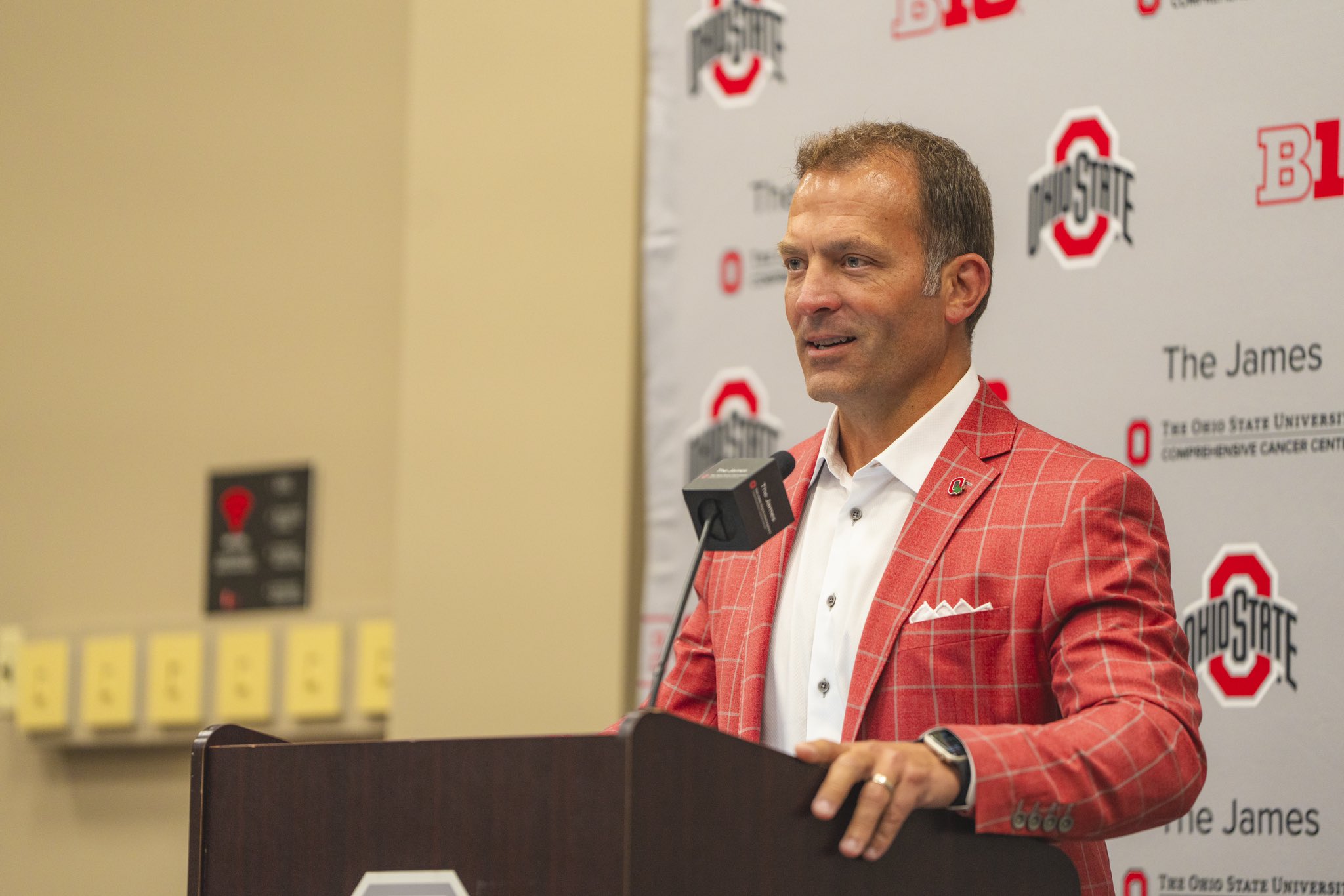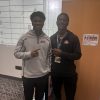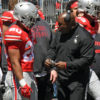
Newly minted Ohio State athletic director Ross Bjork is stepping into his role in Columbus during a time of significant instability in college athletics, with conference expansion, the proliferation of name, image and likeness and the introduction of revenue sharing all emerging as things placed on his plate of duties during his early days with the Buckeyes.
While NIL and conference expansion has become a large part of college athletics since 2021 — a change that Bjork has been well accustomed to during his time as athletic director at Texas A&M — it is revenue sharing that is an entirely new development in this sphere, with schools set to directly share revenue with student-athletes up to a cap of 22 percent of the average revenue for power conference programs starting the 2025-26 fall academic year.
Bjork, who spoke with local Ohio State media at the Fawcett Center on Wednesday following the formal introduction of Justin Haire and Kirin Kumar as head baseball and softball coaches, said that while he is still unsure of what revenue sharing will look like for each athletic program next year, he has had preliminary conversations with players, coaches and even recruits regarding the effect it could have on college sports in the near future.
“We don’t have clarity yet on how much we get allocated per sport,” Bjork said. “We don’t have clarity on, ‘Is it a financial aid agreement, is it a separate agreement? We don’t have clarity on NIL. But we’re recruiting the NIL environment and what that new environment could look like,”
“We’re recruiting kids and we have commitments for kids in the class of 2025. We have commitments in the class of 2026 for a lot of our sports, and right now all we can tell them is, ‘Look, your scholarship parameters, your financial aid parameters may be this today. But they will look different in some manner whenever we might sign those papers or whenever you step foot on campus.’”
Bjork did not offer a concrete answer on how the financials of student-athletes might change with revenue sharing, but he did say that he is committed to complying with established Title IX laws set by the NCAA, a stance he has publicly backed during previous media availabilities this summer.
Bjork admitted that there is still a lot to be determined regarding how revenue can be equally distributed between men’s and women’s student-athletes under Title IX — something that could be difficult considering the financial outliers of football and men’s basketball — but he will still perform his due diligence and look to those who know the situation best to figure out the proper way to attack this new change.
“There’s a lot to unpack there,” Bjork said. “Title IX is a federal law. We will follow that. How that’s interpreted as it relates to revenue sharing is to be determined. So there are a lot of things that we’re putting on the table right now. There’s a lot of analysis. The best thing that we can do right now (is say), ‘Hey, let’s put everything in the bucket.’
“Let’s analyze where we are with all these things. What are the logistics? What’s the workload look like moving forward? What are the answers that we don’t have yet? And there’s probably a lot more than we do have. Title IX allocation and revenue share is one of them. So we’ll get a lot of opinions. We’ll get a lot of legal advice. And then whatever it is, we’ll make the right decision based on what we think is the right approach based on the law.”
While many questions persist over how Ohio State and Bjork will directly compensate their student-athletes starting in 2025-26, the Buckeyes’ new athletic director remained confident that he and his administration will be on the right side of history with this new change given the department’s lucrative resources and consistent track record of success.
“We’ve started a process here where we’re evaluating sort of a stratification plan (regarding) how programs are funded,” Bjork said. “The revenue share model, we know that’s coming. The details are being worked out. But we will fund our programs where we can at least be competitive.
“What that looks like, we don’t know yet. How many scholarships are going to be allocated to baseball and softball and what the roster limits are, we don’t have all those answers. But it’s Ohio State. We’ll be on the right side of the equation. It may look differently, whatever that means. But if you believe in the place and in the infrastructure, those things will be worked out, whatever that is.”








